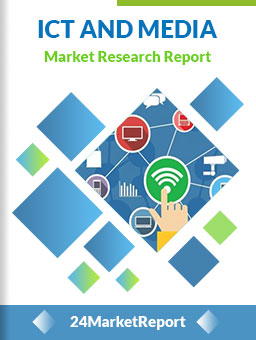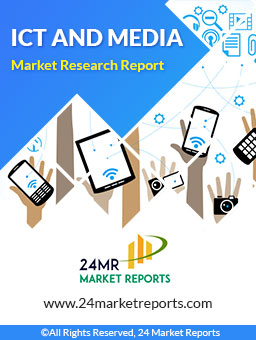
Download FREE Report Sample
Download Free sampleMARKET INSIGHTS
Global B2B Surface Hygiene and Disinfection Products market size was valued at USD 17.35 billion in 2024. The market is projected to grow from USD 18.92 billion in 2025 to USD 32.76 billion by 2032, exhibiting a CAGR of 9.7% during the forecast period.
B2B surface hygiene and disinfection products are specialized chemical formulations designed to eliminate pathogens and maintain cleanliness in commercial environments. These products include quaternary ammonium compounds (Quats), hydrogen peroxide-based solutions, alcohol-based sanitizers, and other antimicrobial agents. They are formulated for various applications across healthcare facilities, food service establishments (HoReCa), industrial settings, and office buildings.
The market growth is driven by increasing health awareness post-pandemic, stringent regulatory standards for facility hygiene, and rising demand from the healthcare sector. For instance, hospitals account for over 28% of global market consumption due to high infection control requirements. Key players like Ecolab and Diversey have expanded their portfolios with eco-friendly quat-free alternatives to meet sustainability demands. Asia-Pacific shows the fastest growth at 11.2% CAGR through 2032, led by China's USD 4.8 billion commercial cleaning sector.
Post-Pandemic Hygiene Awareness to Sustain Long-Term Market Growth
The global health crisis fundamentally transformed organizational attitudes toward surface disinfection, creating sustained demand for professional-grade hygiene products. While the immediate surge in demand has stabilized, B2B buyers across sectors now allocate 32% more budget to preventative disinfection programs compared to pre-pandemic levels. This behavioral shift is reinforced by emerging evidence linking thorough surface hygiene protocols to reduced workplace absenteeism and improved operational continuity.
Regulatory Stringency in Healthcare to Accelerate Product Innovation
To know more about market statistics, Download a FREE Sample copy
Healthcare-associated infections (HAIs) account for approximately 7% of hospitalizations in developed economies, driving stringent new disinfection protocols. Recent updates to Joint Commission standards now mandate the use of EPA-registered, hospital-grade disinfectants with specific log reduction claims against priority pathogens. This regulatory push has catalyzed R&D investments, with leading manufacturers introducing novel formulations that combine rapid kill times with material compatibility - addressing the dual needs of efficacy and facility preservation.
➤ For example, recent third-party testing demonstrated certain quaternary ammonium compounds achieve 5-log reduction of norovirus surrogates in under 60 seconds, setting new benchmarks for the industry.
Furthermore, the extension of disinfection requirements beyond clinical spaces into residential care facilities, outpatient centers, and ambulances has expanded the addressable market by an estimated 18% since 2021.
Raw Material Volatility to Compress Manufacturer Margins
The industry faces persistent supply chain pressures, with key active ingredients like isopropyl alcohol experiencing price fluctuations exceeding 40% year-over-year. This volatility stems from concentrated production geography - over 65% of global disinfectant raw material capacity originates from just three chemical manufacturing hubs. Compounding the challenge, geopolitical tensions have disrupted traditional trade flows, forcing Formulators to either absorb cost increases or implement challenging price adjustments to B2B customers.
Greenwashing Concerns to Slow Sustainable Product Adoption
While demand for environmentally preferable products grows, inconsistent certification standards have created market confusion. A recent analysis of quat-free disinfectants revealed only 38% met their marketed sustainability claims when subjected to full lifecycle assessment. This credibility gap causes hesitation among procurement teams, particularly in sectors like hospitality where sustainability commitments must be balanced against proven pathogen efficacy. Manufacturers investing in third-party validations and transparent ingredient disclosures are gradually overcoming this barrier.
Smart Dispensing Systems to Enable Data-Driven Hygiene Management
The integration of IoT sensors with chemical dispensing equipment represents a $1.2 billion growth frontier. Modern systems now track usage patterns, validate dwell time compliance, and automatically trigger reorders - addressing chronic challenges in protocol adherence. Early adopters in food service report 27% improvement in health inspection scores after implementing connected hygiene stations with usage analytics. This technology convergence creates lucrative opportunities for chemical suppliers to transition toward service-based models with recurring revenue streams.
Emerging Markets Infrastructure Development to Drive Volume Growth
Hospital construction booms across Asia-Pacific and Middle East regions will require an estimated 850 million liters of professional disinfectants annually by 2026. Unlike mature markets focused on premium formulations, these growth regions prioritize cost-effective, high-volume solutions with simpler regulatory pathways. Local manufacturing partnerships and bulk packaging innovations present strategic avenues for multinational players to capture this expansion while mitigating freight cost disadvantages.
Antimicrobial Resistance to Demand Continuous Product Reformulation
Pathogen mutation cycles now outpace traditional product development timelines, with studies showing certain microorganisms developing reduced susceptibility to common active ingredients within 18-24 months. This biological arms race forces manufacturers to sustain heavy R&D expenditures - typically 9-12% of revenue - just to maintain existing efficacy claims. The challenge is particularly acute in long-term care settings where recurrent Clostridioides difficile outbreaks demonstrate the limitations of current sporicidal technologies.
Workforce Shortages to Limit Service-Centric Solutions
The commercial cleaning sector faces a 22% vacancy rate for trained technicians in key markets, constraining adoption of value-added services like onsite infection prevention consulting. This labor crunch disproportionately impacts premium product segments requiring specialized application training. Automation and equipment ergonomics are emerging as critical differentiators as manufacturers compete for share in a capacity-constrained service provider network.
Quat-Based Products Lead Due to Their Broad-Spectrum Efficacy and Cost-Effectiveness
The market is segmented based on type into:
Quat-based products
Subtypes: Alkyl dimethyl benzyl ammonium chloride, Didecyl dimethyl ammonium chloride, and others
Quat-free products
Subtypes: Hydrogen peroxide-based, Chlorine-based, and others
Healthcare Segment Dominates Due to Stringent Hygiene Standards and High Infection Control Requirements
The market is segmented based on application into:
Healthcare
HoReCa (Hotels/Restaurants/Cafés)
Offices
Industries
Communities
Liquid Formulations Remain Most Popular Due to Ease of Application and Surface Coverage
The market is segmented based on form into:
Liquids
Wipes
Sprays
Foams
Direct Sales Continue to Dominate Through Established B2B Contracts and Customized Solutions
The market is segmented based on distribution channel into:
Direct sales
Distributors
E-commerce
Market Leaders Drive Innovation in Post-Pandemic Hygiene Standards
With heightened awareness of infection control across industries, the global B2B surface hygiene market has witnessed accelerated growth, projected to expand at 9.7% CAGR through 2032. The competitive landscape remains dynamic, featuring specialized chemical manufacturers alongside diversified conglomerates expanding their infection prevention portfolios.
Ecolab Inc. continues to dominate the market with its comprehensive cleaning and disinfection systems, particularly in healthcare and foodservice segments. The company's 2023 acquisition of additional disinfection technology patents solidified its leadership position. Meanwhile, Diversey Holdings, now operating as DiverseyCleaning, has gained significant traction through its sustainable cleaning solutions, capturing over 12% of the European institutional cleaning market.
The industrial segment has seen 3M emerge as a key innovator, particularly with its electrostatic disinfection systems that achieved 99.9% pathogen elimination in clinical trials. Their recent partnership with several Asian manufacturers has expanded regional distribution networks significantly. In parallel, The Clorox Company continues leveraging its brand recognition to penetrate the office and commercial building segments, reporting 18% revenue growth in B2B disinfectants during 2023.
Specialty players like Metrex (now part of Danaher) and Medisept have strengthened positions through targeted solutions for healthcare environments, with Metrex's CaviCide line becoming a standard in North American hospitals. Such focused approaches allow niche players to compete effectively despite the market presence of larger corporations.
Ecolab Inc. (U.S.)
DiverseyCleaning (U.K.)
Arjo (Sweden)
Bacoban (Turkey)
The Clorox Company (U.S.)
WIGOL (Germany)
Spartan Chemical Company, Inc. (U.S.)
Beiersdorf (Germany)
Medisept Sp. (Poland)
Chemlab, Division Of Crown Chemical Products (U.K.)
Metrex (U.S.)
3M (U.S.)
The global B2B surface hygiene and disinfection products market has witnessed exponential growth, primarily fueled by heightened awareness of infection prevention in commercial and institutional spaces. Valued at $17.35 billion in 2024, this sector is projected to grow at a CAGR of 9.7% through 2032, reaching $32.76 billion. While healthcare facilities remain the dominant end-users (accounting for over 35% of market share), industries such as hospitality and corporate offices are increasingly adopting advanced disinfection protocols. The shift toward touchless sanitation systems and EPA-approved disinfectants has further revolutionized operational safety measures across sectors.
Sustainability-Centric Formulations Gain Traction
Environmental concerns continue to reshape product development strategies, with quat-free disinfectants capturing nearly 28% of market demand in 2024. These biodegradable solutions, often plant-based or hydrogen-peroxide activated, address regulatory pressures while meeting corporate sustainability targets. However, efficacy remains a critical consideration—manufacturers are investing heavily in R&D to balance microbial kill claims with eco-friendly profiles. This dual focus has led to a 12% annual increase in patent filings for green disinfection technologies since 2020.
The emergence of IoT-enabled disinfection systems represents a paradigm shift in facility management. Electrostatic sprayers—now deployed in over 40% of Fortune 500 companies—utilize AI-driven usage analytics to optimize chemical consumption and coverage. Furthermore, UV-C robotic disinfectors have seen triple-digit adoption rates in airports and educational institutions post-2022. These automated solutions reduce human error while delivering verifiable log-reduction metrics that manual cleaning cannot achieve. As labor shortages persist, such technologies are becoming operational necessities rather than luxuries.
While regional disparities exist—with North America and Europe leading in high-tech adoption—Asia-Pacific emerges as the fastest-growing market (11.2% CAGR) due to rapid healthcare infrastructure development. The trend toward multi-purpose disinfectants that combat emerging pathogens while maintaining material compatibility will likely dominate product innovation pipelines through the decade. Industry leaders are subsequently reallocating 15-20% of annual R&D budgets toward long-lasting antimicrobial surface treatments that extend protection between cleanings.
North America
The North American market leads in adoption of advanced surface hygiene solutions due to strict regulatory frameworks, including EPA guidelines and OSHA standards for workplace safety. The region witnessed a 22% surge in demand for hospital-grade disinfectants post-pandemic, with healthcare facilities accounting for 38% of total B2B sales. Sustainable quat-free formulations are gaining traction, particularly in corporate offices and hospitality sectors. Major players like Ecolab and 3M dominate distribution channels, leveraging their established supply networks. While Canada shows steady growth, the U.S. remains the innovation hub, with emerging technologies like electrostatic spray systems becoming mainstream in commercial cleaning protocols.
Europe
European markets prioritize environmentally compliant disinfectants, driven by EU Biocidal Products Regulation (BPR) mandates that phased out several conventional chemical formulations. Germany and France collectively hold 45% of the regional market share, with healthcare and food service industries being primary adopters. The Nordic countries exhibit the highest growth potential (11.3% CAGR) due to stringent hygiene standards in senior care facilities. A notable shift towards plant-based disinfectants is emerging, particularly in the HoReCa sector, where sustainability certifications influence procurement decisions. However, price sensitivity in Southern Europe delays widespread adoption of premium products.
Asia-Pacific
As the fastest-growing regional market, APAC benefits from rising hygiene awareness and healthcare expenditure, particularly in China (13% annual growth in institutional cleaning budgets). Japan's advanced healthcare infrastructure maintains steady demand for EPA/WHO-approved disinfectants, while Southeast Asia shows explosive growth in industrial applications. India presents a unique dichotomy - urban corporate sectors adopt international standards while rural areas still rely on basic bleach solutions. The region dominates production of cost-effective quat-based products, exporting 60% of its output to Western markets. Governments' focus on pandemic preparedness after COVID-19 continues to drive institutional purchases.
South America
Market growth in South America remains uneven, with Brazil accounting for 58% of regional disinfectant sales concentrated in urban healthcare and manufacturing sectors. Economic volatility restricts adoption of premium imported brands, favoring local manufacturers offering budget solutions. Argentina shows potential in food processing disinfectants due to expanding meat export industry. While awareness of surface hygiene has improved post-pandemic, infrastructural limitations in rural areas and inconsistent enforcement of sanitary regulations hinder market maturation. The commercial cleaning sector demonstrates gradual modernization, with janitorial services increasingly incorporating EPA-registered products.
Middle East & Africa
The MEA region exhibits polarized market dynamics - Gulf Cooperation Council (GCC) countries drive 72% of premium product demand through luxury hospitality and healthcare projects, while North Africa relies on basic disinfectants. UAE leads in hospital infection control investments, mandating ISO-certified products for all medical facilities. Sub-Saharan Africa shows untapped potential, though market penetration faces challenges from informal sector dominance and limited access to clean water infrastructure. Recent outbreaks like cholera in Malawi have temporarily boosted demand, yet sustainable growth requires systemic improvements in public health spending and distribution networks.
This market research report offers a holistic overview of global and regional markets for the forecast period 2025–2032. It presents accurate and actionable insights based on a blend of primary and secondary research.
✅ Market Overview
Global and regional market size (historical & forecast)
Growth trends and value/volume projections
✅ Segmentation Analysis
By product type or category
By application or usage area
By end-user industry
By distribution channel (if applicable)
✅ Regional Insights
North America, Europe, Asia-Pacific, Latin America, Middle East & Africa
Country-level data for key markets
✅ Competitive Landscape
Company profiles and market share analysis
Key strategies: M&A, partnerships, expansions
Product portfolio and pricing strategies
✅ Technology & Innovation
Emerging technologies and R&D trends
Automation, digitalization, sustainability initiatives
Impact of AI, IoT, or other disruptors (where applicable)
✅ Market Dynamics
Key drivers supporting market growth
Restraints and potential risk factors
Supply chain trends and challenges
✅ Opportunities & Recommendations
High-growth segments
Investment hotspots
Strategic suggestions for stakeholders
✅ Stakeholder Insights
Target audience includes manufacturers, suppliers, distributors, investors, regulators, and policymakers
-> Key players include Ecolab Inc, DiverseyCleaning, Arjo, Bacoban, The Clorox Company, WIGOL, Spartan Chemical Company, Inc, Beiersdorf, and 3M, among others.
-> Key growth drivers include increased hygiene awareness post-pandemic, stringent government regulations, and rising demand from healthcare and hospitality sectors.
-> North America currently holds the largest market share, while Asia-Pacific is expected to witness the fastest growth during the forecast period.
-> Emerging trends include eco-friendly disinfectants, smart dispensing systems, and increased adoption of automated cleaning solutions.

Speak to our Custom Research Team and get the Custom Research in a budget
Custom ResearchFrequently Asked Questions ?
A license granted to one user. Rules or conditions might be applied for e.g. the use of electric files (PDFs) or printings, depending on product.
A license granted to multiple users.
A license granted to a single business site/establishment.
A license granted to all employees within organisation access to the product.
Upto Working 24 to 48 hrs
Upto 72 hrs max - Weekends and Public Holidays
Online Payments with PayPal and CCavenue
Wire Transfer/Bank Transfer
Hard Copy




 Industry Market Size
Industry Market Size SWOT Analysis
SWOT Analysis Industry Major Players
Industry Major Players Revenue Forecasts
Revenue Forecasts Historical and Forecast Growth
Historical and Forecast Growth Profitability Analysis
Profitability Analysis
























